Adapting Packaging Technology to Meet Device Industry Needs
Medical Device & Diagnostic Industry MagazineMDDI Article IndexOriginally Published January 2001PACKAGINGMedical device manufacturers seek cost-effective packaging solutions that can offer increased functionality and performance.William Leventon
January 1, 2001
Medical Device & Diagnostic Industry Magazine
MDDI Article Index
Originally Published January 2001
PACKAGING
William Leventon
Most medical device manufacturers appear to require two things from the packaging industry. First, they need more: more capability, more efficiency, more options, and more guidance. Second, they need less: less weight, less trouble, less regulatory hassling—and, of course, less-expensive products.
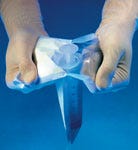 Makers of packaging-related products must offer a variety of capabilities while responding to cost-cutting pressures.
Makers of packaging-related products must offer a variety of capabilities while responding to cost-cutting pressures.
This seems to be a tall order, and some of it appears contradictory, but the packaging industry is trying to deliver. Professional organizations are striving to make standards more uniform and less troublesome. And companies that make packaging-related products are working on new offerings with a variety of capabilities while keeping in mind the tremendous cost-cutting pressures their customers face.
STANDARD PROCEDURES
Much of the recent work on packaging standards has been based on ISO document 11607, "Packaging for Terminally Sterilized Medical Devices." Since FDA recognized ISO 11607 as a consensus standard, the ASTM F02.60 subcommittee on medical device packaging is submitting versions of the test methods cited in the ISO document for recognition as consensus standards.
The reasoning behind these efforts appears to be clear. "Manufacturers are starting to see more FDA questioning of test methods," says Neil Lorimer, senior quality engineer for Rexam Medical Packaging (Mundelein, IL). By persuading FDA to recognize the ASTM test procedures as consensus standards, the packaging subcommittee hopes to reduce the burden on manufacturers to validate test methods.
FDA recognition would mean that "if you follow these test methods, [the agency] for the most part won't challenge your use of them," explains Hal Miller, director of packaging technology for Johnson & Johnson (New Brunswick, NJ) and chairman of the packaging subcommittee. On occasion, however, FDA may still review manufacturers' test data during field Inspections, Miller adds.
Before ASTM submits test methods to FDA, industry professionals vote on the proposed versions. So far, six test methods have been approved in this manner. Miller expects an FDA decision to be rendered on these test methods soon.
Last year, the industry approved a burst-testing standard that required the use of restraining plates. The plates limit package deformation to help ensure that air pressure is distributed evenly in the seal area.
More recently, the committee has been working on package-integrity testing. Standards are being developed for an internal pressurization test and a pressure-decay test for flexible packaging. Both of these test methods will be voted on soon, according to Miller.
This year, Miller expects the committee to consider procedures for several more integrity tests. These include a force-decay test, a pressure-decay procedure, and a test to sense carbon dioxide.
As the ASTM work was under way, another effort to standardize test methods was undertaken by the Flexible Packaging Association (FPA). The FPA's Sterilization Packaging Manufacturers Council issued its "Guide for Design and Evaluation of Primary Packaging for Medical Products," a compendium of package-testing methods used in the medical device industry. The guide distinguishes between R&D test methods and process/quality control methods.
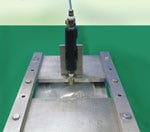 New leak-test standards recommend use of restraining plates such as this system, which is used with a leaktight pressurizing path and pressure sensor.
New leak-test standards recommend use of restraining plates such as this system, which is used with a leaktight pressurizing path and pressure sensor.
Technical people throughout the industry participated in developing the guide, according to Andrea Haferkamp, Rexam's director of regulatory affairs. "It's a very good document," Haferkamp says.
Efforts are also being made to harmonize U.S. and European standards. As a first step in this direction, European standard EN 868-1 may soon be incorporated into ISO 11607. A final vote on this proposal is taking place now, according to Miller.
Miller believes the change will have minimal impact on U.S. medical device manufacturers. "We're trying to eliminate the confusion in Europe about what standards they need to maintain," he says.
MATERIAL PROGRESS
Perhaps more than ever before, medical device manufacturers are feeling the need to reduce costs. As a result, they are reassessing packaging materials and procedures for potential cost savings. "OEMs have had overengineered packages for a long time," says Bill Wetzel, director of North American marketing for Perfecseal Inc. (Oshkosh, WI). He adds that, "The packages have been performing well, but price pressures in the marketplace don't allow the luxury of an overengineered package anymore. So we're all trying to find more cost-effective packaging solutions."
Wetzel believes that these solutions will include downgauging of existing packaging materials. "Instead of using an 8-mil forming film, maybe you only need a 6-mil forming film," he says. "You want to maintain package integrity, but in a more cost-effective fashion. That's the name of the game."
In addition to downgauging existing materials, manufacturers can expect to begin using new packaging materials that are less expensive than the more familiar types. A much-touted example of the trend toward lower-cost materials is DuPont's Tyvek 2FS. Although this lightweight version of Tyvek (1.6 oz of polymer per square yard) costs less than previous grades, there is a trade-off. The newer version is limited in its ability to handle the most demanding packaging applications. "It's for soft products that can't poke holes in the package, products that don't have sharp edges or abrasive corners," says Earl Hackett, research associate for DuPont Nonwovens (Wilmington, DE).
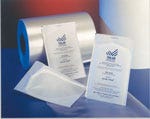 Tolas's TPF-0563 autoclavable film is a polyester-based lamination that can be heat sealed to 1073B Tyvek to form a peelable pouch.
Tolas's TPF-0563 autoclavable film is a polyester-based lamination that can be heat sealed to 1073B Tyvek to form a peelable pouch.
Opinion is somewhat divided on the appropriate use of Tyvek 2FS. "It narrows the price gap between Tyvek and paper or even plastic films," according to Carl Marotta, president of Tolas Health Care Packaging Inc. (Feasterville, PA). "It provides most of the quality features that you expect from Tyvek but at a lower cost," he adds.
On the other hand, some users claim that Tyvek 2FS has a tendency to sometimes tear unexpectly when stressed. Miller maintains that "It was touted as [a material] you could use in an uncoated state, but it really doesn't work very well when uncoated."
Because Tyvek 2FS costs less than heavier grades of Tyvek—even when coated—many are switching to the new grade. But not everyone. Donald Barcan, president of Donbar Industries Inc. (Long Valley, NJ), a package-engineering consulting firm, noting differences with 2FS used with some form-fill-seal machines, says that most of my clients are happy to use the other [Tyvek] grades."
To address the shortcomings of the new grade of Tyvek, materials are being developed that will give users the same peel performance they would get from heavier grades. With assistance from DuPont, Perfecseal is developing film and adhesive technology that will work more effectively with Tyvek 2FS. "It's pretty impressive," explains Hackett. "When you peel [the film] open, it's got a real nice feel to it. It's getting to the point where it almost feels like the old coated Tyvek–type peels."
Hackett expects DuPont to introduce other low-cost alternatives to its current offerings in the next two or three years. "Right now, everything is high-density polyethylene," he says. "We might explore different polymers." These include use of polyester and polypropylene, which could accommodate steam sterilization.
At some point, "we'd like to compete head-to-head with paper," Hackett says. "[Tyvek] 2FS was one of our initial approaches to that goal."
METALLOCENE AND COEXTRUSIONS
While Tyvek 2FS has generated a certain amount of controversy, there seems to be little debate about the merits of metallocenes, polyethylene materials that offer the properties of polyester and nylon—but at a lower cost. "They have really come on strong," says John Ozcomert, Rexam's technical manager. "The first generation of metallocene polymers was very difficult to work with, but the second and third generations are much more amenable to processing."
Most major medical packaging film manufacturers now offer downgauged films that incorporate metallocene technology. These films offer excellent formability, toughness, and clarity, Ozcomert says. Barcan explains that these films also provide a wider temperature range for sealing.
In addition to driving the need for new technologies, the current cost-cutting drive is forcing medical device manufacturers to reevaluate an existing technology that has not generated much enthusiasm until now. Instead of buying adhesive-coated paper, manufacturers using so-called direct-seal processes buy plain paper and seal it directly to the rest of the package. Direct seal processes are used widely in Europe, but U.S. manufacturers have been concerned about the possibility of fiber contamination.
"When you peel that [direct seal] package apart, you're going to liberate some paper fibers," Ozcomert notes. "In Europe, [manufacturers] are pretty tolerant of that, but here [in the United States] they tend to be more conservative and opt for adhesive-coated paper."
Economic considerations, however, have recently prompted some U.S. manufacturers to take a second look at direct seal. "If you use a material that doesn't have to be coated with adhesive, you're going to drive down costs," according to Ozcomert.
For manufacturers with concerns about fiber lift, a packaging material from Rexam offers a clever solution to the problem. Now under evaluation at a number of sites, Core Peel is a coextruded multilayer film with separate seal and peel layers. "We don't ask the layer that does the sealing to do the peeling," Ozcomert explains. "The surfaces that come together never come apart again, so fiber lift is a nonissue."
Core Peel is not the only coextruded material that is demonstrating promise in medical device packaging. "Coextrusion is really taking off," Ozcomert says, adding that the process allows researchers to incorporate toughness and barrier properties into new materials.
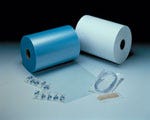 This coextruded pliable film is designed to combine the strength and formability of Surlyn with the latest single-site metallocene resin technology.
This coextruded pliable film is designed to combine the strength and formability of Surlyn with the latest single-site metallocene resin technology.
In the past, Ozcomert notes, a coextruded film might contain a single thick layer of nylon. Now, some films are elaborate structures containing several nylon layers, in addition to other layers of thin barrier materials.
ACTIVE BARRIERS
A new group of barrier materials are being studied currently by Rexam, Perfecseal, and other companies. Cyclic olefin copolymers, or COCs, could someday provide excellent oxygen and water-vapor barriers at a reasonable price, according to some observers. "They compete with very expensive materials or materials that would have to be very thick to provide the barrier you want," Ozcomert says.
In addition to their barrier attributes, COCs are proving to be highly formable. They may also offer stiffness that will help in form-fill-seal processing, according to Perfecseal's Wetzel.
Wetzel adds that barrier materials are also in use that provide product visibility. Polyesters and nylons vacuum coated with aluminum oxide are clear yet offer high moisture and oxygen barrier capabilities.
Some medical devices manufacturers want more than an oxygen barrier. They would prefer a package that actively "scrubs" the air around the product. "You can make a package in which the film itself will trap the oxygen inside," Ozcomert says. Although Rexam has yet to roll out an "active barrier" package, the concept remains under consideration.
Also under consideration are packages that absorb interior odors. For example, products that are irradiated sometimes give off odors that can be trapped in impermeable packages. To eliminate these odors or make them less offensive, Perfecseal is working on odor-scavenging additives that can be incorporated into the packaging material.
NEW TECHNOLOGIES
While materials change, so do other packaging technologies, such as package testing. Most current test methods damage packages, rendering them unusable; however, manufacturers seem to be gravitating toward nondestructive testing methods, according to Stephen Franks, executive vice president of T.M. Electronics Inc. (Worcester, MA), which makes package-testing equipment. "I think more nondestructive tests will be evolving over the next year or two," Franks predicts.
Package design is expected to evolve as well. Tolas president Carl Marotta believes that medical device manufacturers are showing more interest in package design than they have in the past. In response, Tolas has been looking at ways to make products less mobile in the package. One way to accomplish this is with compartmented packaging that locks devices tightly in place, making it less likely that they will puncture the package.
Of course, packages can be adversely affected from the outside as well as from within. Chemical and radiation sterilization, for instance, can damage packages and cause toxic effects. Thus, Marotta believes there will be increased demand for packages sterilized by steam autoclave or dry heat. "When devices can tolerate fairly high temperatures, we find that more are being sterilized this way," he says, adding that these methods are less costly than chemical and radiation sterilization.
Marotta also sees more device manufacturers moving to in-line packaging processes. To meet in-line packaging demand, Tolas supplies pouches attached together on continuous rolls. On the packaging line, the pouches are separated, filled, sealed, and sometimes printed.
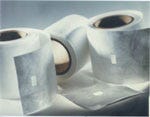 Pouches are supplied on continuous rolls to customers for in-house printing.
Pouches are supplied on continuous rolls to customers for in-house printing.
One of the firm's largest customers desired pouches on a roll. Says Marotta, "We used to supply them with millions of individual pouches. But they found that they could reduce inventories by going to continuous pouches on a roll." In addition, pouch rolls were found to reduce the risk of packaging mix-ups. In-line printing on rolls eliminated the possibility that preprinted pouches would be matched with the wrong products.
PRINTING IN-LINE
Use of digital in-line printing qualifies as an important trend all by itself. For one thing, it enables manufacturers to dispose of traditional print-related inventory. In addition, it can help them adapt more effectively to European requirements that medical device packages display information in multiple languages. "On-line, you can print English one minute, then press a button and print any other language the next minute," says DuPont's Hackett.
Although digital printing is not new, it has only recently been able to keep up with production lines. "In the last year, some systems [have appeared] that will run at the line speeds of a form-fill-seal machine," Hackett reports. He adds that three- and four-color digital printing he has seen recently "looked darn good."
Digital printing technology can also help manufacturers carry out "labeling on demand" to reduce the amount of print on European packages. "There are many packages that just aren't big enough to carry 12 or 15 languages," Johnson & Johnson's Miller notes. In these cases, he explains, manufacturers could first print information on the package in a few languages that cover the product's main market areas. Later, as distribution to a country with another language is initiated, a label specific to that country can be printed and placed on the package.
As packages get smaller, and requirements for printed external information increase, Miller expects manufacturers to make increased use of 2-D data-matrix technology. This technology "lets you take a lot of data and put it on an area about the size of a quarter of a postage stamp," he says. The tiny data matrix would be printed on packages instead of much larger types of print—yet would convey the same information.
VALIDATING THE PROCESS
Looking at a packaging operation as a whole, how does a device manufacturer —or FDA, for that matter—evaluate the process? Process validation is mentioned in ISO 11607, which FDA has accepted as a consensus standard. According to Barcan, this means that FDA supports process validation for all medical device packaging. "FDA and the world recognize that if your process isn't under control and hasn't been validated, you run a risk of producing bad packages," Barcan explains.
To reduce this risk, some firms are offering data acquisition and logging systems as options on packaging equipment. The systems measure and record forming and sealing data so that manufacturers can produce an accurate history of their equipment's performance.
Some packaging equipment makers now offer data acquisition systems at extra cost to people who purchase their machines. At some point, Barcan believes that data acquisition systems may simply be included in the base price of packaging systems.
CONCLUSION
Although the changes may not be as dramatic as the light-speed transformations that are taking place in the electronics industry, medical device packaging is hardly a static field. Work is proceeding on a number of innovative materials and technologies that seem certain to improve packaging performance. Industry professionals are also working on standards that, ideally, will make testing and validation functions less burdensome. These developments should make it easier for medical device manufacturers to satisfy customers and survive tough competition.
William Leventon is a freelance writer living in Somers Point, NJ.
To the MDDI January 2001 table of contents | To the MDDI home page
Copyright ©2001 Medical Device & Diagnostic Industry
About the Author(s)
You May Also Like

.png?width=300&auto=webp&quality=80&disable=upscale)
